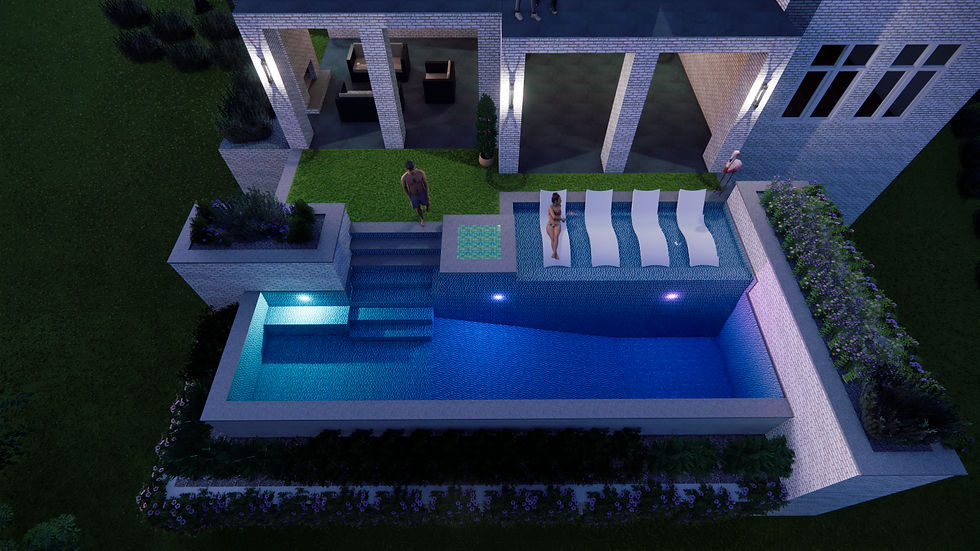How to Choose the Right Materials for Outdoor Spaces: A Practical Guide
- Masha Carter

- Jun 20
- 3 min read
Selecting materials for your outdoor project can feel overwhelming with so many options available. The key is understanding how different materials perform in your specific climate and use case, then balancing durability with your aesthetic preferences and budget.

Climate Considerations Come First
Your local weather patterns should drive your material decisions. In areas with frequent freeze-thaw cycles, choose materials that can handle temperature fluctuations without cracking. Regions with intense sun exposure need materials that won't fade or become uncomfortably hot underfoot.
Coastal areas require materials that resist salt air corrosion, while areas with heavy rainfall need excellent drainage properties. Understanding your climate challenges upfront prevents costly replacements down the road.
Pool Decking Material Options
For pool areas, safety and comfort are paramount. Porcelain pavers have become increasingly popular for pool decking, and for good reason. They offer the elegant appearance of natural stone while staying cooler underfoot and requiring minimal maintenance. Large-format porcelain creates clean, modern lines that make spaces feel more expansive.
Natural stone options like marble and limestone provide timeless luxury. Marble offers exceptional beauty and stays relatively cool even in direct sunlight, though it requires regular sealing to maintain its appearance. Limestone delivers outstanding durability with a softer, more organic aesthetic that complements both traditional and contemporary designs.
Whatever material you choose, ensure it has adequate texture for slip resistance when wet, as safety around water areas is non-negotiable.
Patio Material Considerations
Patios see heavy use and need materials that can handle furniture, foot traffic, and weather exposure. Porcelain pavers excel in patio applications, offering exceptional durability, stain resistance, and design versatility. Available in large formats and numerous finishes, porcelain can mimic natural stone, wood, or concrete while delivering superior performance and easier maintenance.
Natural stone remains a premium choice for those seeking authentic luxury. Marble creates stunning patio spaces with its distinctive veining and sophisticated appearance, while limestone offers excellent durability and a more subtle, organic character that ages gracefully over time.
For those seeking a more budget-conscious approach, concrete remains viable for its versatility and cost-effectiveness, though it typically requires more frequent maintenance and may lack the premium aesthetic of stone or high-end porcelain options.

Budget vs. Longevity Balance
Higher-quality materials typically cost more upfront but often provide better long-term value through reduced maintenance and replacement needs. However, this doesn't mean you need the most expensive option for every application.
Consider where you'll get the most use and visual impact, then allocate your budget accordingly. Splurge on high-traffic areas like main patios, but consider more budget-friendly options for less visible spaces.
Maintenance Requirements Matter
Be honest about how much ongoing maintenance you're willing to do. Natural stone and wood require regular sealing and cleaning to maintain their appearance. Composite materials and manufactured pavers typically need less frequent attention.
Factor maintenance costs and time commitment into your decision. A material that saves you hours of annual maintenance might be worth the higher upfront investment.
Aesthetic Compatibility
Your material choices should complement your home's architectural style and existing landscape features. Modern homes often pair well with clean-lined concrete or large-format pavers, while traditional homes might benefit from natural stone or classic brick.
Consider the color palette of your home's exterior when selecting materials. Neutral tones tend to be more versatile and won't clash with seasonal plantings or outdoor furniture changes.
Installation Considerations
Some materials are more DIY-friendly than others. Gravel and simple concrete pavers can often be installed by homeowners, while natural stone and complex patterns typically require professional installation.
Factor installation costs into your budget comparison. A less expensive material that requires professional installation might end up costing more than a pricier option you can install yourself.
Sustainability Factors
If environmental impact matters to you, consider locally sourced materials to reduce transportation costs and carbon footprint. Recycled concrete, reclaimed brick, and sustainably harvested wood offer eco-friendly options.
Permeable materials help manage stormwater runoff and may be required by local regulations in some areas.
The right material choice depends on your specific situation, priorities, and budget. Take time to see materials in person when possible, and don't hesitate to ask suppliers about performance in your local climate conditions. A well-informed decision upfront leads to years of satisfaction with your outdoor space.

Expert Guidance for Your Outdoor Project
Choosing the right materials for your outdoor space involves balancing numerous factors, from climate considerations to long-term maintenance requirements. At Cosmic Design Studio, our experienced team has worked with every type of outdoor material and can guide you toward choices that perfectly match your needs, style, and budget. We'll help you navigate the options and avoid costly mistakes, ensuring your outdoor investment delivers lasting beauty and functionality. Schedule a consultation with our material specialists to discuss your project and get personalized recommendations based on your specific requirements.



Comments